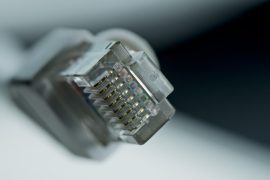A computer is nothing without a hard drive since it stores all essential data of a user. Unfortunately, your hard drive can crash at any moment without any prior indication. This is why a user should test out hard drive health regularly to avoid unexpected cases. It requires no advanced knowledge such as how to fix hdd clicking and others like this for a usual checkup. We are sharing some easy processes that let you check the hard drive health even at home. Let’s go ahead.
Apply S.M.A.R.T
Self Monitoring, Analysis, and Reporting Technology, also known as S.M.A.R.T, is a common default part of modern hard drives. SMART is the primary checkup option a user can consider that outlines the drive’s failing and encountering faults. Though the measurement can vary depending on manufacturers, error identification and reporting are very similar. The feature can identify error rates, hard drive heat, mechanical shock, and other failure issues. This is a good choice as a quick hard drive checkup tool.
CHKDSK tool for Windows
As a Windows OS user, the procedure of inspecting a hard drive condition is effortless. CHKDSK is a default Windows OS tool that helps users find out system faults and bad sections by scanning the hard drive.
Go to “This PC” from the desktop and check the “Properties” of a drive to scan. After opening the pop-up box, select the “Tool” tab and press the “Check now” option. A dialogue box will open for the confirmation to begin the scanning. Click on the “Start” tab.
CHKDSK is a fundamental and default option that can find issues. Besides, it lets you recognize if the tool can fix the issue or not.
CrystalDiskInfo
Using a dedicated third-party tool for checking out hard drive conditions is the best way. CrystalDiskInfo is an authoritative tool that can detect the drive’s heat, overall health condition, class of the drive, and read/write fault. The tool is free and light but yet very powerful to identify hard drive issues. You can inspect the drive’s health manually at any time. Besides, the tool automatically checks up the hard drive every ten minutes. In case of any abnormality detection, the tool will alert you instantly.
Use WMIC
WMIC stands for Windows Management Interface Command, which is an immediate command-based check-up for your hard drive. It is crucial to note that WMIC provides basic information for a regular checkup. If you need more advanced information, you should look for other tools.
To activate the WMIC command, push the “Win” and “R” buttons from the keyboard at a time for opening the Run option. Type “CMD” on the command typing box and press OK. Right after this action, the Windows command section will open.
Now, you have to type “wmic” and push the enter button to activate the WMI line. When it is activated, type “disk drive get status” and push enter. After a few seconds, the system will display the overall status of your hard disk.





